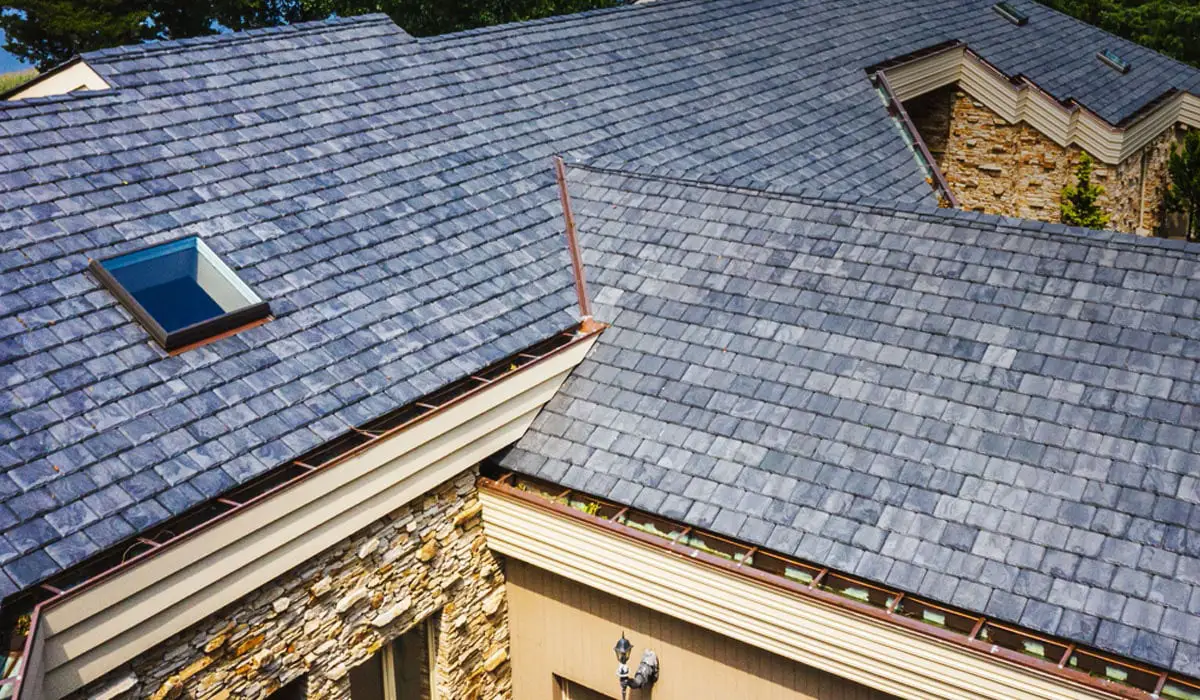Modern rooftops are turning into arenas for technical ingenuity. Shaped in various styles and colours, the latest roofs come to combine function with fashion, adding value to the homeowners’ lives, while helping to conserve energy.
You can also opt for the eco-friendly alternatives, which have become increasingly popular lately, thanks to a larger cultural shift towards sustainable practices. If you get solar panels on your roof, you will leave a smaller footprint, and you will have an interesting aesthetic feature in your home besides!
Bold Colors
Traditionally, homeowners tend to use neutral colours only for home decoration. The current trend is after more vibrant shades as patrons appreciate the visual excitement and liveliness these colours bring to living area and simultaneously the impact on their mental health, particularly brighter ones like reds and yellows.
And be sure that you balance those bold colours with neutrals, or you’ll swamp a space in a sea of colour. People’s eyes tend to be drawn to colour so you want to give your brilliant hues a wall and a floor that steps back and allows them to pop out. Use white, grey and beige neutrals as a backdrop to give a colourful scheme the fullest impact.
Just materials that will disrupt the least amount of nature during their harvesting, treatment and use in the long run.
These are likely to be natural, renewable materials, such as bamboo, stone or the adobe brick, or be made of recycled materials, such as cork.
Whatever the origin or production method; if the use of sustainable materials does not require an energy consumption that is too high during production or production, then this is usually the precondition for the sustainability of building materials.
Unconventional Shapes
Homeowners will want roofs that enrich and beautify their homes Homeowners want roofs that are not just structurally unique, but ones that also signal the heritage of progress and nature, and incorporate modern technologies that are transforming our world. And they will now get their chance to do exactly this.
By utilizing open areas, large bottom-to-ceiling windows to catch natural light and an opportunity for the owners to take more benefit from their scenic views and land, together with the use of less lighting in winter season due to natural light and more natural warmth trapped inside their modern home as the sunlight captures, tends them to be less energy consuming in the long run. The minimalist design of modern home emphasizes on functionality rather than attractive outlooks.
Eco-Friendly Materials
It is becoming more and more a trend that homebuilders aim for more sustainable building materials. Compared to traditional building materials, eco-homebuilding has fewer environmental impacts such as air and soil pollution. In addition, sustainable building materials can be beneficial for homeowners after the construction of a house. Homeowners using sustainable building materials may need to lessen the daily energy consumption, which contributes to lower energy bills. Moreover, the long-term maintenance costs of houses made of sustainable building materials are relatively lower than that of traditional building materials, as well as less amounts of waste generated by using ecofriendly materials.
From recycled metal for sustainable roofs and walls to clay or concrete tiles, slate tiles and wood shakes and shingles, there are sustainably designed roofing and walling options that can enhance durability and aesthetics. Green roofs and walls utilise vegetation to collect stormwater runoff and regulate temperature and reduce heat-Island effects.
Other green products include flooring made of bamboo and cork; industrial by-products and repurposed wood pieces; and compressed straw wall panels that can be used as insulation cladding panels. Eco-products are often stronger and longer lasting than conventional materials, meaning that a house can become stronger and last longer without as much replacement and repair.
Smart home technology comes with private eco related houses these days, which allow home owners to monitor and control energy consumption more efficiently, and eventually to save energy leading to less utility costs and less eco impact, as well as improve indoor air quality.
Long-Lasting Roofs
Roof upgrades that add value to the home and lower the cost of living There are many opportunities to add value and lower the cost of living for homeowners through roof improvements. The roof is one of the most important contributions to the energy performance of a home; enhanced insulation products and solar panels can further improve this aspect of your home’s performance.
Though asphalt shingles are not the most energy-efficient option, metal roofs can provide significant cooling cost savings. Lignum vitae was more or less the wood roof of choice throughout the 19th century, and in very dry climates it has performed well; with some care, it remains an economical and sustainable choice, a beautiful material that can complement classic and historic styles of houses. But much like slate requires some easing-off of asthmatic attention to detail, wood roofing materials will also need regular maintenance if you want them to remain beautiful for the next 100 years or more.
In the near future, between now and 2024, new innovations will invade our home roofs. From solar-integrated shingles providing power in solar cells, and smart sensors that offer real-time energy auditing, to solar integrated shingles, one can see how the new designs can keep up with modern living and global warming sensibilities. A roof is more than a mere covering; it is a vital functional component of every home that forms one whole.
